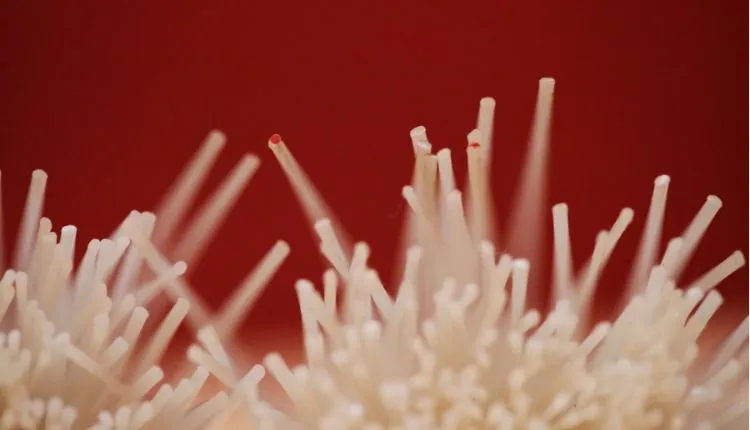
4 Surprising Applications of Nanofibers You Probably Didn’t Know About
In a world where new innovations are being introduced every day, it can be difficult to keep up with all the latest trends. But there is one technology that is worth paying attention to: nanofibers. These tiny fibers, which are thousands of times smaller than a human hair, are revolutionizing a wide range of industries. This article will explore some surprising applications of nanofibers in many industries.
What are Nanofibers?
Nanofibers are extremely tiny fibers with a diameter between 1 and 100 nanometers. They are usually made from synthetic or natural materials, including polymers, metals, ceramics, and carbon-based materials. Electrospinning is the process used in producing nanofibers and other material processing.
Despite their small size, nanofibers possess unique properties that make them highly desirable in a variety of industries. Some of the key properties of nanofibers include their high surface area to volume ratio, which allows them to interact with other materials in unique ways. They are also highly porous, meaning they can be used to filter out impurities from liquids and gases.
By leveraging the unique properties of these tiny fibers, scientists and engineers are finding new and creative ways to solve some of the world’s most pressing problems.
#1 Medical Applications of Nanofibers
Nanofibers are being used in a variety of medical applications, from wound dressings to drug delivery systems.
Wound Healing
Nanofiber wound dressings can create a moist environment that promotes faster healing and prevents scarring. The fibers also have antimicrobial properties, which can help reduce the risk of infection.
Tissue Engineering
Nanofibers can be used as scaffolds to support the growth of new tissues and organs. The fibers can be engineered to mimic the properties of natural tissues, which can improve the success of tissue engineering procedures.
Drug Delivery
Nanofibers can be used to create drug delivery systems that release medications over an extended period of time. This can improve patient outcomes by ensuring a steady stream of medication and reducing the need for frequent dosing.
#2 Environmental Applications of Nanofibers
Nanofibers are being used to address some of the most pressing environmental challenges facing the planet today.
Water Filtration
Nanofibers are being used to create advanced water filtration systems that can remove even the smallest particles and impurities from contaminated water sources.
Air Purification
Nanofibers are also being used in air filtration systems to remove harmful pollutants and improve indoor air quality.
Oil Spill Clean-up
Nanofibers can be used to create highly absorbent materials that can soak up oil spills in water, making them an effective tool for environmental clean-up efforts.
#3 Energy Applications of Nanofibers
Nanofibers and other material processing techniques are being used to address some of the biggest challenges facing the energy industry today.
Energy Storage
Nanofibers are being used to create high-performance batteries and supercapacitors with faster charging times, longer lifetimes, and greater energy density.
Solar Cells
By incorporating nanofibers into solar cells, researchers are able to increase the efficiency of these devices and reduce their cost.
Fuel Cells
Nanofibers are being used to create more efficient and cost-effective fuel cells, which convert chemical energy into electrical energy.
In addition to these applications, nanofibers are also being explored for use in other areas of the energy industry, such as oil and gas exploration and the production of hydrogen fuel.
#4 Consumer Goods
Nanofibers are also finding a variety of applications in the world of consumer goods. From clothing to personal care products, these tiny fibers are revolutionizing the way we interact with the products we use every day.
Clothing
Nanofibers can be used to create fabrics that are incredibly lightweight, breathable, and moisture-wicking. These fabrics are ideal for use in athletic apparel, as well as for people who work in hot or humid environments.
Personal Care Products
Nanofibers are being used in a variety of personal care products, including face masks and wound dressings. These fibers have the ability to filter out impurities and protect against bacteria, making them ideal for use in products that come into contact with the skin.
Food Packaging
Nanofibers are also being used in food packaging to help extend the shelf life of perishable products. By creating packaging that is highly breathable, nanofibers can help prevent spoilage and reduce food waste.
Conclusion
As we look to the future, it’s clear that nanofibers and other material processing techniques will continue to play a vital role in shaping the world around us. By harnessing the power of these tiny fibers, we can work towards solving some of the biggest challenges facing our planet today. Whether it’s finding new ways to fight disease, protect the environment, or improve the products we use every day, nanofibers are sure to play a critical role in the years to come




